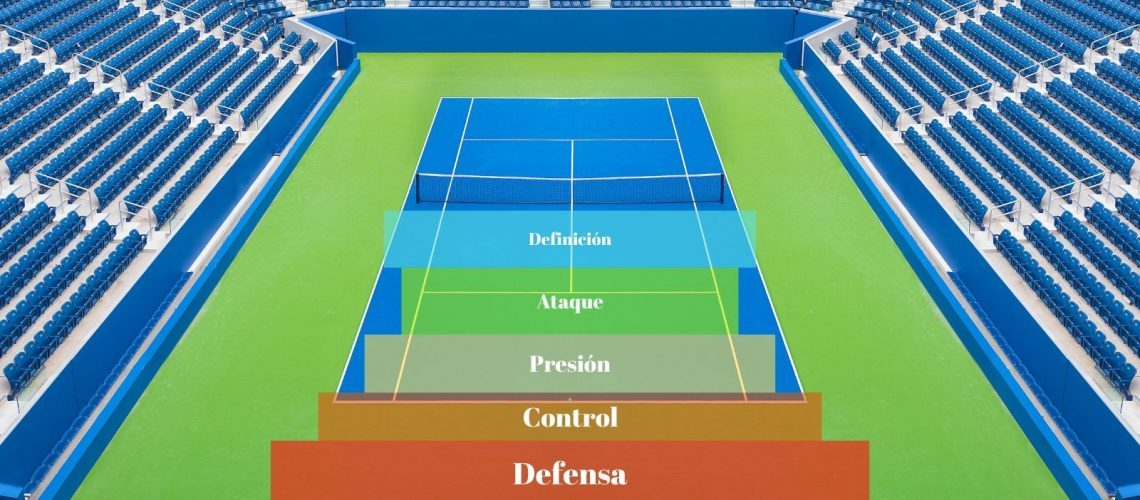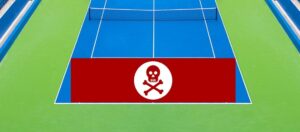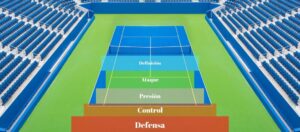In this article, we are going to talk about the Zones of the Court in general and create links with other related concepts, such as Centers or Ranges. We will break down the main content area by area and we will see how we should act in each of them. We will also mention some important details about the Creative Zone or the Vertical Centers (height of the court where we position ourselves), although we will analyze them in later articles. We will also review the concept of the Dead Zone (or No Man’s Land) and see its characteristics.
The 5 zones of the court
We have 5 basic zones of the court: each of these zones has its tactical explanation and offers certain basic guidelines to follow. To see the Basic Scheme of the Zones, CLICK HERE.
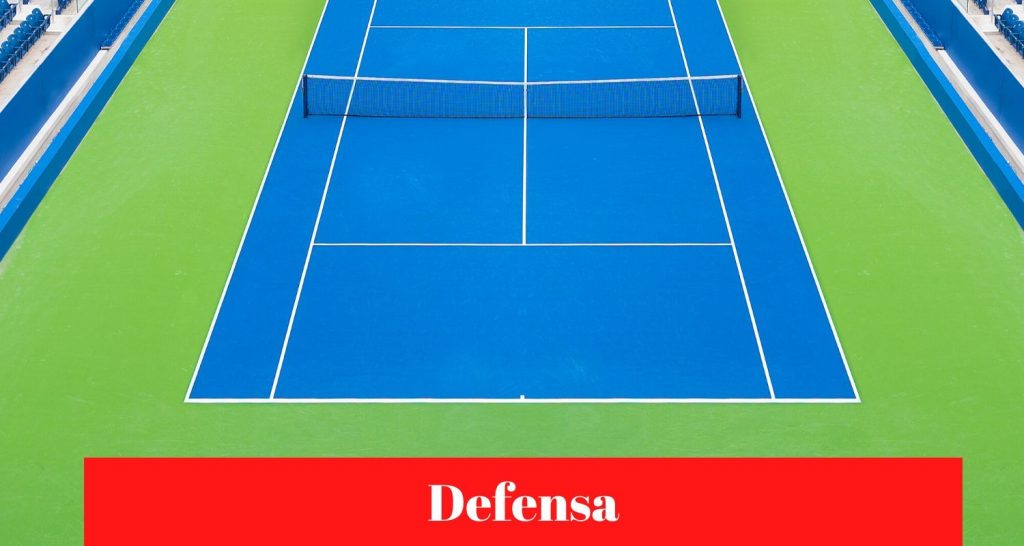
Defense
It is the area in which the opponent forces you to go back due to its power, depth, angle opening, etc., and, as a consequence, you lose ground on the court.
Priority: respond with an appropriate choice to neutralize their aggressiveness (usually with a high and deep shot with topspin). You must regain the control zone as soon as possible.
Error: executing a high-risk hit. You don’t have enough angle to open the court, nor position to make damage with power.
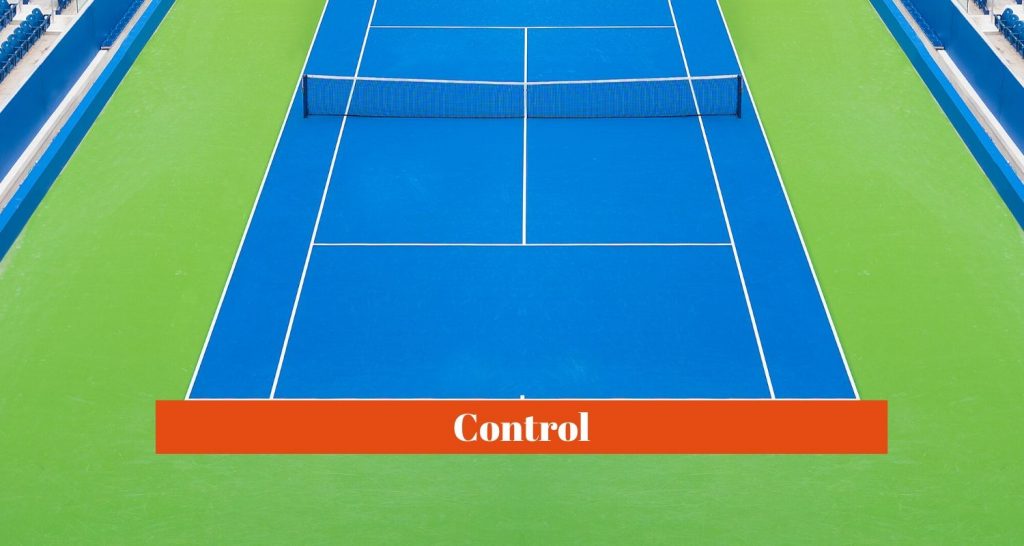
Control
The rally is leveled, you work the point with neutral shots to force the opponent to give up the ground.
Priority: leave no options for the opponent to gain ground. You shall try not to go back and stay in the defense zone. Shorten the angles to intercept the ball to cover the court and gain time.
Error: opening the court with risky shots, playing too close to the lines or leaving the ball short and thus making it easy for the opponent to gain ground.

Pressure
I’ve managed to get inside the court. The distance that the ball travels is reduced. Your opponent has less reaction time. You can open more angles. You have to play with the tempo (playing live/raising ball) as well as with the placement. You have to have clear that you want to continue dominating.
Priority: maintaining the initiative and the ground gained on the court. Find more precise shots to put pressure and remove loading ground from the opponent’s feet. Have a clear vision of the plays to close the points.
Error: the mistake would be to be passive, choose shots that did not hurt, play high or short balls, play dead (falling) ball.
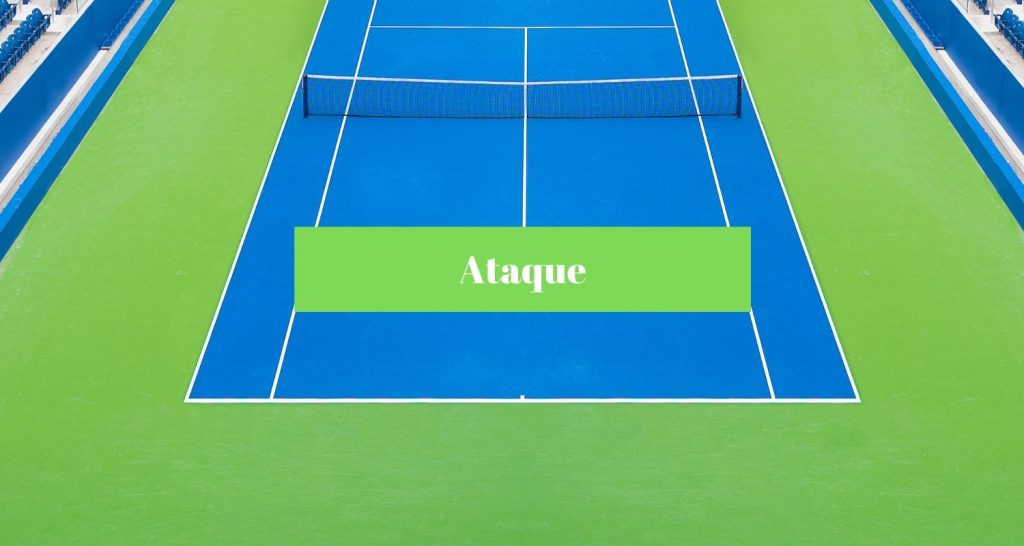
Attack
Like the Pressure Zone, the Attack Zone belongs to the Transition Zones. It is necessary to bear in mind that you are playing inside the No Man’s Land (see “Dead Zone”) and you cannot stay still after the shot. You have to choose an aggressive option, looking for a winner or “+1” to close at the net. Keep in mind that if you hit the ball above or below the net to choose the right shot: you have to be more aggressive if the impact occurs above or look for “+1” in case you hit below the net.
Priority: You choose an aggressive shot (winner or approach “+1”). You are looking to gain more ground ahead. You adapt to a technical (short preparation) or tactical level (patterns of approach, drop shots, placement). You don’t stay in the Dead Zone after the shot.
Error: the error would be to play with little aggressiveness, stay in the Dead Zone, or fail in tactical choices (playing flat, with high risk, in a low ball for example).

Definition
You are in an area where distances are very short and the ball returns faster. For my opposite is a disadvantage, but you must bear in mind that for you too: time is accelerating. You will need a lot of foot speed and little preparation, in addition to being very attentive watching the ball. In this area, you have to try to close the point.
Priority: You must try to intercept the ball over the net, cutting angles, split stepping (low) to react earlier and close the opponent’s hitting angles by getting to your center.
Error: relax and stop, thinking that you have already won the point. Make a slightly aggressive blow. Lose the center. Make big backswings.
Extension of the subject
The Horizontal Zones or Ranges of the court
In addition to these 5 zones described above, which would have a vertical direction, we must take into account others whose direction on the court is horizontal, which we call “Ranges”. These Ranges can be divided into three numbered categories. Read more (Coming soon) …
The Creative Zone
The Creative Zone is on the outer side at the height of the Dead Zone or the Transition Zones: Pressure and Attack. In this space, our ability to cover the width of the court decreases because we are in displacement, advancing towards the net. For this reason, most of the shots made in this area carry an extra load, both technically and tactically. Read more (Coming soon) …
The Dead Zone
The Dead Zone or No Man’s Land is called the space between the baseline and the half-court line. It has certain characteristics related to the Centers of the Court. To see more about this subject, follow this link.



